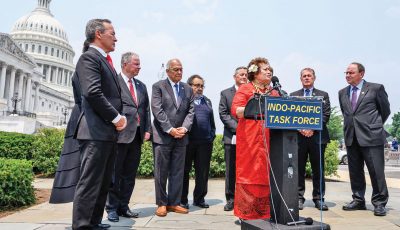The grasslands
The horseman in the open grasslands of Nei Menggu (Inner Mongolia) depicts a romanticized image of the freedom-loving Mongol under the open skies. Yurt towed behind by the menfolk, followed by the women, children and the elderly who can still and are ever so willing to measure one step at a time, is one image of nomadic tribes on their seasonal walkabout, common among the people in the open frontiers. No longer. They’ve been herded into public settlement housing.
More than a year ago, I took my gear on a train to Manzhouli, a city dubbed as “the point of convergence between Russia and China” where frontier ladies are still not afraid to show hairy armpits, not too far from Genghis Khan’s Hailar close to Hulun lake in the Mongolian Plateau that leads to Ulan Bator of Mongolia.
Manzhouli is more than Russia’s downtown architecture like Harbin, Heilongjiang, the home of the world famous ice sculpture festival shown on TV each winter. The whole of Manzhouli is Russian. It was summer 2012 when I witnessed tourists took over the city that is already built for St. Petersburg’s tastes, save that the signage is in Russian, Chinese, Mongolian, and English. China owns the place and Hans change the rubles, but at the time, the Cossacks loudly belted over their malt, bellowed over their brew, and cleared their sinuses with the Chinese vodka (bai jiu).
The Beijing government pushes domestic consumption. The recession of 2007 hit global manufacturing hard, so local tourism is dirt cheap. Vehicles from the south are abundant in Hulunbuir, and Cantonese is spoken in many tour sites. Sadly, the ¥en-rich Japanese tourist are not seen, given their previous Manchukuo record.
It was the grasslands that caught my fancy. At the edge of the fields, dependent on climatic regularity, it was threatened by the encroaching Gobi Desert as one viewed the magnificent skyline of Manzhouli of European architecture in the middle of an undulating verdant sea of grass. The massive border structure between Russia and China was magnificent but the rarity of use spoke of the conflict not too long ago on disputed territories in the shifting sands of the Er’gun River.
Of course, Nei Menggu is more than our Hulunbuir experience. Chifeng northwest of Shenyang, Hohhot and Erenhot northwest of Beijing on the road to Ulan Bator, and Baotou northwest of Ninxia offers diversity as industrialization vies with history to accommodate 56 ethnic players into modern times in a disparate distance of 40 longitudes from one end to the other.
Ordos in the province is familiar to many because of its publicized lavish spending (“Ordos” means “palaces”) including its infamous “ghost town” in Kangbashi new area that hosted a Ms. World contest. Inner Mongolia is a plateau and underneath its rich loess are ancient deposits of minerals and rare earth sediments that are pillars to the region’s economy, registering the highest per capita income in country.
The “Pearl of the Grasslands” is in the Hulunbuir district. Predominantly Han, Hailar consciously chitter-chatter and scripts in Mongolian, appropriately being the home to Genghis Khan. The poster image and optic delight of the grassland outside the city was littered with ranch animals and herders in the open range when I visited, with a meandering river fed by the wetland before it emptied into the Er’gun River to the north where Shiwei had Russian-speaking Chinese, and Chinese-speaking Russians, and the fair mixed bloods delightfully loquacious in between.
The wired fence by the road built to contain the animals from crossing was understandable but the sight of bisecting fences made me suspect territorial dispute among the herders. Then I saw dark smoke in the horizon and realized that the mound of black dirt was piled coal to fuel plants located in the grasslands. The fence kept prying outsiders out!
China requires a lot of power, and though it burns Bohai and Qiqihar oil, along with natural gas and imports, it is 70 percent coal dependent. When it digs up all the coal out of Shanxi (the Province west of Beijing, shan = mountain and xi = west), there will only be a water reservoir left behind! That’s how rich the country is with coal!
Now that China’s derrick technology is mature, the world deprives her of the cleaner black gold within her nine-dash-line in the South China Sea. Oil cartel (supermajors) BP, Shell, Chevron, and ExxonMobil reportedly engage the Philippines, Malaysia and Vietnam to deprive China of her chance to suck up the fluid off the ground in what is now called Luzon Sea in the new Penguin World Map.
The grasslands’ electric plant carbon emission is considerable and the blight of the new electric lines distributing output has no aesthetic claim, but the toxic air affects the global weather 360 degrees. Folks at the fork of the Indian-Kentuck stream in China, Indiana, close to the Kentucky border, now wear protective facemasks. The smog of the grassland is in U.S. backyards.



























